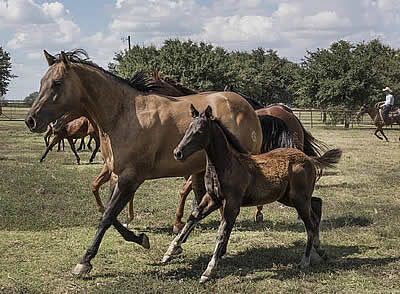There is no aspect of our lives that is not being affected and influenced by technology. Whether we are looking at smartphones, driverless cars, or cryptocurrencies, advances in technology are everywhere. This is especially the case of even when looking at the horse racing industry and the equine world as a whole. We have found some very interesting and, frankly, fascinating developments which will blow your mind.
Robots
We now have robots that are capable of safely lifting a horse by controlling weight distribution, which reduces the chance of life threatening injuries. The University of Saskatchewan and RMD Engineering have designed an equine lift that demonstrates this.
Robots are also helping with equine medicine and CT scans. Scanning an animal as large as a horse is seen is very challenging, especially when the horse has an injury and is distressed. Robotic devices, such as the one created by 4DDI Equine, manoeuvre around the horse and don’t require the horse be sedated.
Sensors
Wearable sensor technology is widely available for horses. This is having a great impact on the industry in assessing health and performance.
Seaver is a wearable girth capable of measuring the heart and breathing rate and can determine the horse’s movement when jumping to measure vertical and horizontal aspects. Riders are able to access this information immediately on the smart phone app.
Another type of sensor technology is the smart saddle by Voltaire. The Blue Wing saddle contains a chip that collects information on the horse such as the number of jumps, time spent in each gait and quality of the horse’s symmetry. Like the girth, this information is easily accessible by the rider and can be used to assess performance.
3D Printing
CSIRO in Australia has developed 3D printing for horseshoes. Imaging software analyses the hoof and prints shoes that are the safest most viable fit for the horse. 3D printing can also be used for horses with injuries. Horses are often put down when they break a bone; however, prosthetics, casts, and splints can be printed for the ones with injuries. Hopefully in the future, veterinarians will simply print off a component within minutes that will help an injured horse, allowing them to trial a number of potential solutions without the need for the horse to be put down.
Artificial Intelligence
Artificial intelligence automatically gathers data from sensors and other collection devices and interprets it to help make decisions. The automated process means a lot of mistakes are eliminated that could occur with humans.
Equimetre can be worn on the girth, measure the heart rate and breathing, but also collect data on the temperature, humidity, and conditions of the track. These data provide analysis that helps trainers determine what will best suit the horse. Combining this with machine vision technology, we could soon see insights into the management and routine of horses on a daily basis. This allows better, more accurate training and would be excellent for monitoring health.
Virtual Reality
Virtual Reality allows anybody wanting to work with horses to experience this without any complications and risks. Difficult surgery can be practiced in a classroom, allowing students and teachers to build up experience before doing this for real. Technology has also been developed to re-create the experience of a beginner riding a horse for the first time. Whilst rather expensive, it can help the industry become more ergonomic going forward. We all are aware that Virtual Reality is already being employed in the gaming world; however, it also has the potential to be used in other markets like horse race betting. There may come a time when progressive bookmakers such as Unibet will be offering their members the chance to bet and experience the thrill of the race via Virtual Reality, which would definitely heighten the entire experience.
